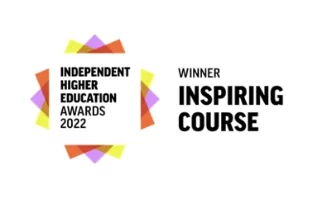Information for authors
Norland Educare Research Journal
Duties of authors
Declaration of authorship and no conflict of interest
Authors should ensure that they have written and submit only original works. Authors are required to declare that the manuscript has not been submitted or published previously elsewhere, including under a different title, and must declare that there are no known conflicts of interest associated with the paper.
Duplicate publications
If a paper overlaps substantially with ones that they have already published or are preparing for publication, then authors must make a full statement which contains details of all previously published, submitted or in-preparation papers that might be regarded as having similar content. Copies of such material, including papers in press, may be requested to be included with the submitted paper to assist the editors in determining acceptance of the paper for review.
No conflict of interest
Authors must confirm in the published paper that there are no known conflicts of interest, financial or material, associated with this publication and there has been no significant financial support for this work that could have influenced its outcome or they need to draw the attention of the editor to facts which may be considered as potential conflicts of interest regarding the funding received, for example in determining the aims, the design of the study, methods of collecting and analysing data, and input in interpreting and reporting findings and conclusions.
The Declaration of Authorship and No Conflict of Interest Form (available to download at the bottom of this page) must be completed online, signed, dated, and saved as a PDF file. The form must be submitted along with the manuscript files.
Author declarations and acknowledgements in the manuscript
Acknowledgements
Authors must acknowledge in the published paper anyone who has contributed towards the article but does not meet the criteria of authorship, for example a person who acted in an advisory capacity; a person who provided sources of information or purely technical support, writing assistance, or proofreading services; or the head of a department who provided only general support.
Funding
Authors must declare in the published paper all sources of funding for the reported research, if applicable. They should indicate the role of the funding body, if any, in determining the aims, the design of the study, methods of collecting and analysing data, and input in interpreting and reporting findings and conclusions.
No conflict of interest
Authors must confirm in the published paper that there are no known conflicts of interest, financial or material, associated with this publication and there has been no significant financial support for this work that could have influenced its outcome.
Permission for copyright-protected materials
All sources used in a paper should be clearly cited. To use copyright-protected material (for example a reproduction of large amounts of previously published work or figures and diagrams from another paper), the author must obtain the written permission of the publisher or the author of such work and submit it with the manuscript.
Authors are responsible for evidencing the originality of their work and may be requested to submit a copy for verification by plagiarism-detection software such as Turnitin or iThenticate. Based on the plagiarism report, the editors may ask authors to edit their manuscript or the manuscript may be rejected.
Types of papers
The journal accepts empirical research papers, conceptual papers and methodological papers, systematic literature reviews and scoping studies, critical reviews and commentaries, and research digests, as briefly outlined below.
Empirical research papers
Empirical research papers should be highly scientific and of qualitative, quantitative, or mixed methods, or any other methodology appropriate to the field and/or topic of study. Discipline-specific and interdisciplinary papers that address and integrate theory, practice and policy in innovative and original ways are particularly welcome. Research papers should present an accurate account of the research, provide references and attribution to other studies in the field, present findings, and discuss their significance.
Conceptual papers
Conceptual papers, including philosophical and position papers, should provide reasoned arguments of a particular stance the author(s) take on a specific issue, theory or theories, debate, or controversy. Papers should have an original, innovative, or even provocative take on the issue discussed and argued.
Methodological papers
Methodological papers should introduce new, innovative, and creative methodologies and methods of collecting data. Papers which explore, validate, and ascertain the ontological and epistemic assumptions of such methodologies are particularly welcomed.
Systematic literature reviews and scoping studies
Papers based on systematic literature reviews and scoping studies should clearly define the specific topic or issue that is explored, provide methodological details of how the review/scoping study was conducted, summarise key evidence or critical points of current knowledge about the topic or issue, and conclude with recommendations for professional practice or further research. The journal seeks submissions of systematic literature reviews focusing on professional practice issues which might have been extensively researched but for which evidence is largely inconsistent and/or the issues remain debatable or contested.
Critical reviews and commentaries
Critical reviews and commentaries should provide a close reading and analysis of a passage of text to pose a question and provide an explanation of the kind of effects that the text’s argument may have on professional practice or policy implementation.
Research Digests
Research Digests are reserved for empirical and conceptual papers, and systematic literature reviews and scoping studies conducted within the broadly defined context of centre-based educare, with its findings explored and discussed for their relevance to home-based educare. Papers must be explicit in their exploration of the relevance of findings to home-based educare practices and/or invite a dialogue among researchers, academics and practitioners working along the spectrum of early childhood provision.
The inclusion of research digests is aimed at opening the dialogue between researchers, academics and professionals working within the wider spectrum of early childhood provision to:
- Strengthen professional collaboration and enable cross-fertilisation of ideas and practices centred around the child.
- Recognize the wider remit of the work of educarers as knowledge brokers and bridgers within children’s wider (micro and macro) social and spatial habitus, beyond education and care offered in a particular type of provision.
All papers should follow the academic conventions concerning their structure and organisation, though alternative, innovative and creative presentations which provide coherent and well-substantiated arguments are welcomed.



